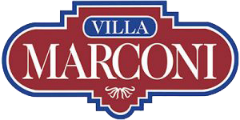Charity
TOURNAMENT DATE: Friday May 10th, 2024
Mortgage Brokers Ottawa are proud to present the First Annual Salvatore Napolitano Texas Hold ‘Em Open with proceeds from this event going to 3 incredible charities.



Date of Event: May 10th, 2024
Location: Villa Marconi – 1026 Baseline Road, just east of Myers Motors on Merivale. Registration and Appetizers will be occur between 6:00 and 7:00 and more food again between 8:05 – 8:30. Villa Marconi is also licensed so they will be serving alcohol with table service throughout the evening. They will accept credit cards and cash for alcoholic beverages.
Charities Benefiting: The 3 charities that we are raising funds for are Ottawa Food Bank, Villa Marconi and Hospice Care Ottawa; all funds from player entry fees will be split evenly between these 3 amazing charities.
Sign-In and Chip Pick Up: 6:00 to 6:45 pm
(Please Note: no walk ins, you must have registered and paid by May 9th at 5:00 pm to play)
Rule Reminders and Brief mentions of Charities and Sponsors: 6:45 to 7:00 pm
First Deal: 7:00 pm
Player Registration – Entry Fee for all players is $100. Players must be 18 years of age or older. Entry fees must be email transferred to poker2023@mortgagebrokersottawa.com by May 9th @ 5:00 pm.
Please note that you must email transfer the entry fee of $100.00 to poker2023@mortgagebrokersottawa.com for your registration to be finalized.
Please use password poker2023 and ensure that your name is added to the comments section of the email transfer. No walk-ins allowed for this tournament, all players must be registered and paid by May 9th at 5:00 pm to be eligible to play and see you on Friday May 10th, 2024.
Sponsorship:
Feature Table Sponsorship (4 tables) - $1,500
Excellent exposure as the final 32 players will all be playing at one of the Final 4 tables. Your sponsorship gets you maximum exposure for the entire night and comes with 2 player invites.
Table Sponsorship (21 tables) – $750
Table sponsorship includes one player invite. You will get plenty of exposure for your business as the game will start with 7 other players at your table and all tables are labelled by sponsor name not numbers therefore getting plenty of mentions for your company.
General Information:
During the first 60 minutes, all players will be allowed to buy in should they bust. There is a maximum of 3 buy ins and it will cost $75 and you will get the same allotment of chips as you began play with. You can only buy in if you are totally out of chips.
Top Up– Once the first 60 minutes are up and we break for 25 minutes, there will be a Top Up option open during these 20 minutes. At this time, you can purchase the original allotment of chips as when play began for $75. This is limited to one per person.
Once we begin play following this break, there will no longer be any opportunity to buy in or top up, if you bust, you are eliminated from the game.
Volunteers will be up chipping throughout the night as blinds go up to allow for faster play. Please note that once a volunteer comes to your table to chip up, they will always give you the same or more in chips than you have on the table ( i.e.: if you have 8 $100 chips and we are up chipping to minimum $500 chips, they will give you 2 $500 chips)
Final Table Prizes - The lucky and/or best 8 who make the Final Table will be going home with an amazing prize compliments of our sponsorships. The Final 8 will have the opportunity to choose the prize of their choice based on order of finish in the tournament so the first place winner chooses first and so on until the final winner ( #8) who gets last choice.
The Final Table Prizes are:
- A $3,000 Travel Voucher
- Samsung 75 inch 4K UHD HDR LED Tizen Smart TV
- Samsung 65 inch HDR QLED Tizen Smart TV
- Apple iPad 10.9" 64GB with Wi-Fi (10th Generation)
- Bushnell Wingman GPS Speaker - Black
- TBD
- TBD
- TBD
I will be the poker referee and will rule on any issues that may arise but please remember that this tournament is to raise funds for 3 incredible charities so hopefully we won’t have any major issues. The referee’s decision will be final should the players not be able to settle the issue.
Texas Hold’em Rules
Type of Game
The game of Texas Hold’em is a poker game where the patrons play against each other for “the pot” of money on the table. The game does not utilize a player-dealer position. The gambling establishment does not participate in the actual play of the game and has no interest in the outcome of the play.
Object of the Game
The object of the game is for players to form a five-card poker hand that ranks higher than the other players’ five-card poker hands. Each player may use any combination of the two cards initially dealt to them at the beginning of the game, referred to as “hole” cards, and the five cards dealt on the table throughout the course of the game, referred to as “community” cards or “board” cards. They may play the board by using no hole cards and using the five community cards, to make the highest ranking five-card poker hand, according to the rankings as shown below.
Description of the Deck and Number of Decks Used
The game shall be played using one standard 52-card deck and no joker. The 52-card deck shall be shuffled, cut, and dealt by the house dealer.
Card Values and Hand Rankings
The rank of each card used in Texas Hold’em when forming a five-card high poker hand, in order of highest to lowest rank, shall be: ace, king, queen, jack, 10, 9, 8, 7, 6, 5, 4, 3, and 2. All suits shall be considered equal in rank. The ace would be considered low any time the ace begins a straight or a straight flush.
Card hands shall rank, from highest to lowest, as follows:
Texas Hold’em Hand Rankings
Hand Dealt Hand Requirements
Royal Flush
A hand that consists of ace, king, queen, jack and 10 of the same suit.
Straight Flush
A hand that consists of five cards of the same suit in consecutive ranking.
King, queen, jack, 10 and 9 is the highest ranked straight flush and a 5, 4, 3, 2 and ace is the lowest ranked straight flush.
Four of a Kind
A hand that consists of four cards of the same rank. Four aces is the highest ranked four of a kind and four 2s is the lowest ranked four of a kind.
Full House
A hand that consists of a three of a kind and a pair. Three aces and two kings is the highest ranked full house and three 2’s and two 3’s is the lowest ranked full house.
Flush
A hand that consists of five cards of the same suit, but not in consecutive ranking. An ace, king, queen, jack and 9 is the highest ranked flush and a 7, 5, 4, 3 and 2 is the lowest ranked flush.
Straight
A hand that consists of five cards that are in consecutive ranking, but that are not the same suit. An ace, king, queen, jack and 10 is the highest ranked traight and a 5, 4, 3, 2 and ace is the lowest ranked straight.
Three of a Kind
A hand that consists of three cards of the same rank. Three aces is the highest ranked three of a kind and three 2’s is the lowest ranked three of a kind.
Two Pairs
A hand that consists of two pairs. Two aces and two kings is the highest ranked two pairs and two 3’s and two 2’s is the lowest ranked two pairs.
One Pair
A hand that consists of two cards of the same rank. Two aces is the highest ranked pair and two 2’s is the lowest ranked pair.
High Card
A hand that consists of five cards that do not make any of the hands listed above. An ace, king, queen, jack and 9 is the highest ranked high card hand and 7, 5, 4, 3 and 2 the lowest ranked high card hand.
Description of Table Used and Total Number of Seated Positions
The game shall be played on a standard poker table which shall accommodate up to ten seated positions for patrons. Each seated position at the table shall have the same minimum and maximum wagering limits during each round of play, as specified by the table limits. Backline wagering is not permitted.
Dealing Procedures and Round of Play
1. The game shall utilize a flat white disk with the words “dealer button” on it to visually designate which player is in the dealer position (in theory) for that hand.
a. The dealer button shall rotate from player to player around the table clockwise after each round of play.
b. The player with the dealer button is the last to receive cards, and has the right of last action on all rounds of play except for the first round, where the “big blind” shall have the right of last action.
2. The game also utilizes two separate disks, one with the words “small blind” and the other with the words “big blind” on them, to visually designate which player is in the “small blind” position and which player is in the “big blind” position.
a. The small blind and the big blind are used to initiate action and are positioned immediately to the left of the dealer button and posted before the house dealer deals cards.
b. On all subsequent wagering rounds (second, third, and fourth), the action is started by the first active player to the left of the dealer button.
c. The small blind and big blind buttons shall rotate from player to player around the table clockwise after each round of play.
3. When first opening a game, all players shall be dealt one card face-up, starting with the player to the immediate left of the house dealer and continuing clockwise around the table.
a. The player with the highest ranked card shall receive the flat white disk with the words “dealer.”
4. Once the dealer button has been distributed by the house dealer, the player to the immediate left of the player with the dealer button shall receive the small blind button and shall be required to place the small blind. Additionally, the player to the immediate left of the player who received the small blind button shall receive the big blind button and shall be required to place the big blind.
a. Both blinds are predetermined and mandatory for the players with the small blind and big blind buttons and are used to initiate action.
b. Both blind wagers shall be placed in the designated wagering area, referred to as “the pot.”
5. Once the blinds have been placed in the pot, the house dealer shall deal one card facedown to each player, starting with the player to the left of the dealer button, the player that received the small blind button, and continuing clockwise around the table until all players have two cards face-down. These initial two cards are referred to as “hole cards.”
6. Once each player has received their two hole cards, the first round of wagering will occur. Players are given the following options, starting with the player to the left of the player that received the big blind button and continuing clockwise around the table:
a. Place a wager that is equal to the amount of the big blind or “call” a wager, meaning to match the amount wagered by another player;
b. Place their two hole cards face-down into the center of the table, referred to as a “fold.” The hand shall be kept face-down and shall be collected by the house dealer, who shall then place them in the discard pile. A player that chooses to fold their hand will no longer participate during that round of play;
c. Place a wager equal to the amount of the big blind as well as an additional amount within the posted table limit, referred to as a “raise;”
d. Call the raise, re-raise, or fold their hand. There is a maximum of three raises per round of wagering, unless there are only two players participating during a round of wagering, in which case there is no limit to the number of raises;
e. The player in the big blind position may “check”, meaning they do not wish to place an additional wager, or they may also raise, by placing an additional wager.
7. After all players have acted in turn and either called all wagers, raised or folded their hand, the house dealer shall move all player wagers into the pot.
8. The house dealer shall then take the top card of the deck and place it in the discard pile without exposing it, referred to as the “burn card.”
9. The house dealer shall then take the next three cards from the top of the deck and place them face-up on the table simultaneously.
a. This is referred to as “the flop.”
b. These are community cards and are shared by all players.
10. Once the first three community cards have been placed face-up on the table, the second round of wagering will occur.
11. All active players that called all wagers and did not fold their hand, shall be given the following options, starting with the first active player to the left of the dealer button:
a. Place a wager according to the established table limits;
b. Do not make a wager, referred to as a “check”, with the option to call or raise a wager by another player;
c. Call a wager according to the rules and guidelines used in the previous round of play;
d. Fold their hand according to the rules and guidelines used in the previous round of play;
e. Raise the pot according to the rules and guidelines used in the previous round of play.
12. After all players have acted in turn and either called all wagers, raised or folded their hand, the house dealer shall move all player wagers into the pot.
13. The house dealer shall then take the top card of the deck and place it in the discard pile without exposing it.
14. The house dealer shall then take one card from the top of the deck and place it face-up on the table so that there are now a total of four community cards face-up on the table.
a. This is referred to as “the turn card.”
b. This card shall also become a community card and is shared by all players.
15. Once the fourth community card has been placed face-up on the table, the third round of wagering will occur.
16. All active players shall be given the following options, starting with the first active player to the left of the dealer button:
a. Place a wager according to the established table limits;
b. Call a wager according to the rules and guidelines used in the previous round of play;
c. Check according to the rules and guidelines used in the previous round of play;
d. Fold their hand according to the rules and guidelines used in the previous round of play;
e. Raise the pot according to the rules and guidelines used in the previous round of play.
17. After all players have acted in turn and either called all wagers, raised or folded their hand, the house dealer shall move all player wagers into the pot.
18. The house dealer shall then take the top card of the deck and place it in the discard pile without exposing it.
19. The house dealer shall then take one card from the top of the deck and place it face-up on the table so there are now a total of five community cards face-up on the table.
a. This is referred to as “the river card.”
b. This card shall also become a community card and is shared by all players.
20. Once the fifth community card has been placed face-up on the table, which is the final community card, the fourth and final round of wagering will occur.
21. All active players shall be given the following options, starting with the first active player to the left of the dealer button:
a. Place a wager according to the established table limits.
b. Call a wager according to the rules and guidelines used in the previous round of play.
c. Check according to the rules and guidelines used in the previous round of play;
d. Fold their hand according to the rules and guidelines used in the previous round of play;
e. Raise the pot according to the rules and guidelines used in the previous round of play.
22. After the fourth and final round of wagering has been completed, the house dealer shall move all wagers into the pot.
23. All active players shall then enter into a showdown with each other and compare their hands.
How Winners are Determined and Paid
Players may use any combination of the two hole cards initially dealt to them at the beginning of the game and the five community cards turned over throughout the course of the game, or they may use the five community cards and no hole cards to make the highest ranking five-card poker hand. The following shall apply for determining which player wins the pot:
• The pot shall be awarded to the player with the highest ranking five-card poker hand, according to the hand and card rankings shown above. All other players shall lose.
• In the event that more than one player has the highest ranked hand, the pot shall be split equally among all players with the winning hand.
• In the instance that there are an odd number of chips, the odd chips shall be awarded to the player closest to the left of the dealer button.
